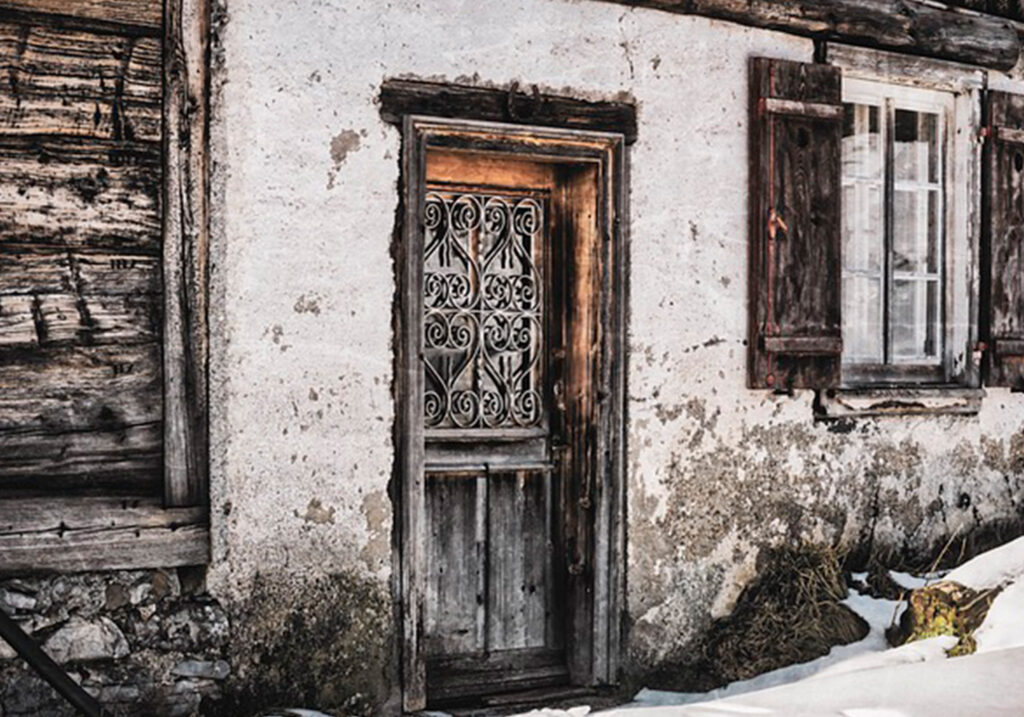Barns have been an essential part of agricultural life for centuries. It serves as storage spaces for crops, shelter for livestock, and work areas for various farm-related activities.
The materials used to construct barns have evolved over time, with traditional options like stone giving way to modern materials such as steel. Each material offers unique benefits and challenges, making the choice between steel and stone a matter of careful consideration.
This article explores whether steel is better than stone for barn building by examining factors like durability, cost, maintenance, environmental impact, and aesthetic appeal.
Historical Context of Barn Materials
Stone Barns
Stone has been a traditional building material for barns, especially in regions where it is abundant. Early farmers utilized local stone to build sturdy structures that could withstand harsh weather and the test of time. The natural availability of stone reduced transportation costs, and its inherent strength made it a reliable material for constructing long-lasting barns. Stone barns were particularly common in areas with rocky terrain, where clearing fields for agriculture left ample stone for building purposes. Over time, these barns became symbols of agricultural heritage, often passed down through generations as enduring landmarks of family farms.
Stone barns are often associated with historical farms and carry a rustic, timeless charm. The aesthetic appeal of stone structures blends harmoniously with rural landscapes, offering a sense of permanence and tradition. Beyond their visual appeal, stone barns provide practical benefits; the thermal mass of stone offers natural insulation, keeping interiors cooler in summer and warmer in winter. This temperature regulation helps protect stored crops and livestock from extreme weather conditions, contributing to the overall efficiency and functionality of the barn. Additionally, stone’s resistance to fire and pests adds to its desirability as a durable building material.
Steel Barns
With advancements in technology and construction techniques, steel has become a popular material for barn building. Steel barns first gained prominence in the mid-20th century, offering a modern alternative to traditional materials. The development of prefabricated steel components revolutionized barn construction, allowing for quicker assembly and reduced labor costs. Steel’s high tensile strength and lightweight properties made it an attractive option for farmers looking to build large, open-span structures without the need for internal support columns. This innovation facilitated the creation of versatile spaces suitable for various agricultural needs, from equipment storage to livestock housing.
Steel barns are commonly used in contemporary farming due to their practicality and cost-effectiveness. Their flexibility in design allows for customized layouts that can easily be expanded or modified as farming operations grow. Additionally, steel barns require less maintenance than traditional materials, as they are resistant to pests, rot, and warping. Modern steel barns also benefit from protective coatings that prevent rust and corrosion, further enhancing their longevity. The combination of durability, ease of construction, and low maintenance costs makes steel barns a favored choice for modern agricultural enterprises seeking efficient and reliable building solutions.
Durability and Strength
Steel
Steel is renowned for its high tensile strength, making it an exceptionally durable material for barn construction. It can withstand extreme weather conditions, including heavy snow, strong winds, and even earthquakes. Steel is also resistant to pests like termites and rodents, which can damage wooden and even some stone structures. Additionally, steel does not warp, crack, or split over time, ensuring a longer lifespan with minimal degradation.
Stone
Stone is equally known for its durability, with many stone barns standing for centuries as a testament to their strength. Stone is impervious to fire, rot, and pests, making it a robust choice for barn construction. However, stone can be susceptible to cracking under certain conditions, such as freeze-thaw cycles in colder climates. The structural integrity of stone barns also depends on the quality of the mortar used, which may deteriorate over time.
Cost Considerations
Initial Construction Costs
The initial cost of building a steel barn is generally lower than that of a stone barn. Prefabricated steel kits reduce labor costs and construction time, making steel barns a cost-effective option. The lightweight nature of steel also reduces transportation and foundation costs.
Stone barns tend to be more expensive to build due to the labor-intensive nature of stone masonry. The cost of sourcing quality stone and skilled masons can significantly increase the overall budget. Additionally, stone barns require more substantial foundations to support their weight, further adding to construction costs.
Long-Term Costs
While steel barns may have lower initial costs, they can incur expenses over time due to maintenance needs like rust prevention and protective coatings. However, modern galvanized steel and protective paints have significantly reduced these issues.
Stone barns generally have lower maintenance costs over the long term, as they are less prone to damage from the elements. However, repairs to stonework can be costly and require specialized skills.
Maintenance Requirements
Steel
Steel barns are relatively low-maintenance compared to other materials. Regular inspections and occasional repainting or recoating can prevent rust and corrosion. Cleaning steel structures is straightforward, often requiring just a power wash to remove dirt and debris. Modern steel barns use galvanized or coated steel to minimize corrosion, extending the lifespan of the building with minimal upkeep.
Stone
Stone barns require little day-to-day maintenance, but over time, mortar joints may need repointing to maintain structural integrity. Stones can shift or crack, especially in regions with significant temperature fluctuations, necessitating repairs. Cleaning stone surfaces can be more labor-intensive, particularly if moss or lichen growth occurs.
Environmental Impact
Steel
The production of steel has a significant environmental footprint due to the energy-intensive processes involved in mining and refining. However, steel is highly recyclable, and many steel barns are made from recycled materials, reducing their overall environmental impact. The lightweight nature of steel also means less energy is used in transportation.
Stone
Stone is a natural, abundant material with a low environmental impact in terms of raw material extraction, especially if sourced locally. Stone barns have a long lifespan, reducing the need for new construction and minimizing environmental disruption. However, the quarrying and transportation of stone can have localized environmental effects.
Aesthetic and Design Flexibility
Steel
Steel offers unparalleled design flexibility, allowing for customizable layouts and modern architectural styles. Steel barns can be designed with wide-open spaces, ideal for large equipment storage or multipurpose use. The sleek, contemporary look of steel barns can be appealing, and various finishes and colors are available to suit aesthetic preferences.
Stone
Stone barns have a timeless, rustic appeal that blends seamlessly with natural landscapes. The texture and color variations in natural stone create unique, visually striking structures. While stone is less flexible in terms of design modifications, its aesthetic value is unmatched for those seeking a traditional look.
Insulation and Climate Control
Steel
Steel barns require additional insulation to regulate temperature, as steel conducts heat and cold more readily than stone. Without proper insulation, steel barns can become excessively hot in summer and cold in winter. Modern insulation materials and techniques, however, can effectively address these issues, making steel barns comfortable year-round.
Stone
Stone’s natural thermal mass provides excellent insulation, maintaining stable interior temperatures regardless of external weather conditions. This makes stone barns more energy-efficient, reducing heating and cooling costs. The thick walls also offer sound insulation, creating a quieter environment inside the barn.
Fire Resistance
Both steel and stone are non-combustible materials, offering excellent fire resistance compared to wood. However, each material responds differently to high temperatures:
- Steel: While steel does not burn, it can lose strength and deform at extremely high temperatures, potentially compromising structural integrity during a fire.
- Stone: Stone is highly resistant to fire and does not lose its structural integrity when exposed to high temperatures. This makes stone barns particularly advantageous in fire-prone areas.
Versatility and Adaptability
Steel
Steel barns are highly versatile and can be easily expanded or modified to accommodate changing needs. The modular nature of steel construction allows for quick additions or alterations, making it a flexible choice for modern farming operations. Steel barns can also be dismantled and relocated if necessary.
Stone
Stone barns are less adaptable due to the permanent nature of stone construction. Expanding or modifying a stone barn requires significant effort and skilled labor, making it less practical for evolving agricultural needs. However, the solid, permanent nature of stone structures can be an advantage in terms of long-term stability and heritage value.
Conclusion
The choice between steel and stone for barn building depends on various factors, including budget, aesthetic preferences, environmental considerations, and intended use.
- Steel barns are cost-effective, quick to construct, and highly versatile, making them ideal for modern, large-scale agricultural operations. They offer flexibility in design and are easy to maintain, though they may require additional insulation for climate control.
- Stone barns provide unmatched durability, natural insulation, and a timeless aesthetic that blends beautifully with rural landscapes. While they involve higher initial costs and less design flexibility, their long lifespan and low maintenance requirements can make them a worthwhile investment.
Ultimately, the decision will depend on the specific needs and priorities of the farmer or builder. Whether you value the modern efficiency of steel or the enduring charm of stone, both materials offer unique benefits that can contribute to the success and sustainability of your agricultural endeavors.

